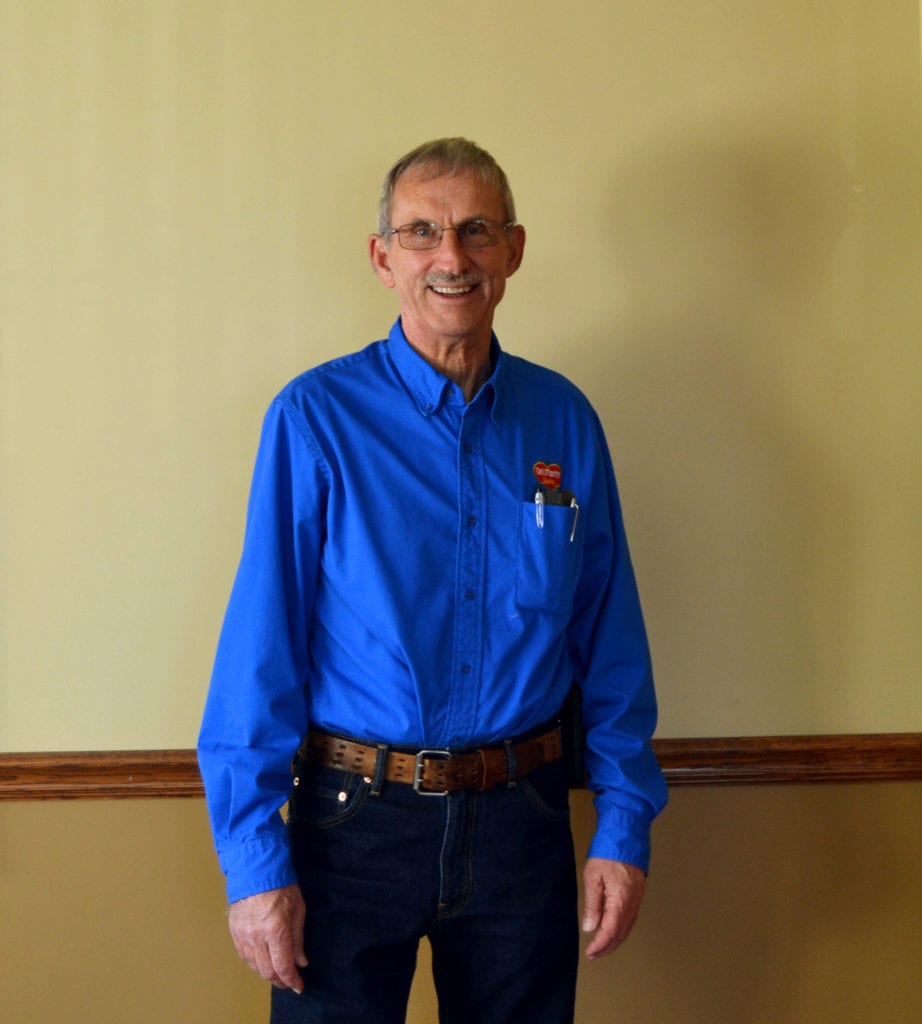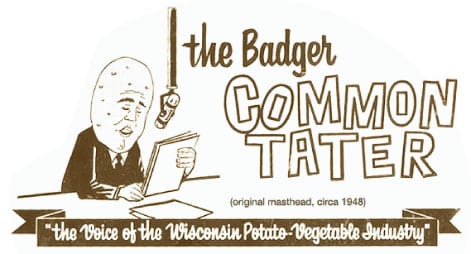
Del Monte Foods is the largest producer of canned fruits and vegetables in the United States and the Del Monte® name is synonymous with premium foods and a singular passion for quality and innovations since its debut in 1886.
About 95% of the Del Monte’s produce is grown on a community of farms in the U.S., and it travels, on average, less than 100 miles from farm to manufacturing gate.

Wisconsin is home to several of their growers particularly around Plover, WI where vegetable crop fields stretch to the horizon. Del Monte maintains three manufacturing processing facilities in the state of Wisconsin located in Markesan, Cambria and Plover. Markesan processes green beans, Cambria processes peas, corn and some green beans and Plover processes green beans, potatoes, beets and carrots.
Del Monte partners with their growers on a variety of programs to yield healthy, productive crops while minimizing impact to the earth’s resources.
For example, since 1923, their seed program continuously develops varieties that require less water and fewer pesticides to produce yet also deliver greater yields. Their new Blue Lake® green bean varieties, along with innovative growing practices, increased grower yields by nearly 200%. That is super planet-friendly because they are helping conserve land, water and energy.
With support programs like these, it is no wonder that many farms have grown vegetables for Del Monte for four or even five generations.

Steve Balling, Del Monte’s Director of Agriculture and Corporate Responsibility, explains the relationship between growers and Del Monte, “Growing crops for Del Monte is really a partnership. It’s a longtime effort,”
Del Monte prides itself on the excellent support staff they employ to assist the growers in their efforts. The Del Monte Plover plant is fortunate enough to have a perfect example of the dedicated, loyal field supervisors they retain in Warren Beebout, who has been encouraging and developing growers since July 1973.

Our feature interview this issue centers on Warren Beebout because after 42 years, Warren will be retiring from his Field Supervisor position, much to the chagrin of local growers who have come to depend on his wisdom and guidance throughout the growing and harvesting seasons.
Before we begin your questions, Warren, would your local management share some of the specifications of the Del Monte Plover plant with us?
The official name for the Plover plant is Del Monte Plover Plant 107, which was acquired in 1966.
It now covers over 20,000 acres, has a production area of 187,000 square feet , onsite 283,150 square feet warehouse space, offsite 70,000 square feet warehouse space and 2,720 office space. As the industry changes we are constantly evaluating and changing our equipment and processes to ensure we maintain the quality of product that our Del Monte name is known for.

Del Monte Foods Plover Plant #107 is an Equal Opportunity Employer with 109 full-time hourly and salaried employees, and roughly 450 seasonal staff in the areas of green bean production, root crop production, field operations and research and development.
Yearly estimates for products packed in 2015 are:
- 77,000 tons Green Beans
- 16,000 tons Potatoes
- 10,000 tons Carrots
- 11,000 tons Beets
I understand you were recruited to work for Del Monte Plover fresh out of college and have worked continuously for at this particular plant for 42 years straight. In today’s world, that is not a common experience so please share with us what kept you at your job and with Del Monte for so many years.
I worked in the factory my first summer at Del Monte, then switched to the field department in 1974, but it is an easy question to answer. I enjoyed what I was doing and who I was working with. The people here at the Plover plant have been good to work with and I have always enjoyed working with the group of farmers who grow for Del Monte.
There were a few opportunities for transfer that I turned down, because those positions didn’t seem right to me. When you enjoy what you do and who you work with, other positions don’t always look that attractive.
When you first started in your position at Del Monte Plover, what crops did Del Monte Plover process? How is that different from today and what changes occurred along the way and in what time period?

When I first started with Del Monte, we only processed green beans, beginning in mid-July and finishing in late September or early October. The plant basically ran for three months out of the year.
Now, the root crop plant starts processing potatoes in mid-June, runs early potatoes until mid-August, red beets through September, carrots until November and then switches back to late potatoes until mid-December.
The green bean processing plant starts running beans in late June and runs until early October.
Initially, we processed one crop and ran for approximately three months per year. Now we process four crops and run six months per year.
Back then, our average green bean yield was 3.5 tons/acre and the standard planter was 4 rows at 38 inches. Presently, our average yield is approaching seven tons/acre and the average planter is 12 rows at 30 inches.
The biggest change for me had to be the addition of root crops at our processing facility in the early 1980’s.
The first year that we ran potatoes, we ran about 20 loads to see if we could get a good product and to determine what the market potential looked like. Now, we run hundreds of loads of potatoes and have branched out to carrots and beets.

We must be doing it right, because that is an area of the canned food market that seems to be consistently growing.
What were your responsibilities in those early years and how do they differ from what you do today?
In the early years, each field supervisor for Del Monte managed nearly 3,000 acres and a crew of 12 two row harvesters. That grew to an area of about 6,000 acres and 24 two row harvesters in the early 1980’s and all harvesting was done in a one-shift operation.
Now each field supervisor handles approximately 12,000 acres, a crew of five multi-row harvesters, two carts and we harvest around the clock with a much tighter time span between harvest and processing.
The biggest change in job responsibilities over the years has to be the addition of root crops to the mix. In the early years, we concentrated on only one crop. What used to be a one-crop operation is now multi-crop.
Presumably, some of the growers you originally worked with have either retired or passed on. Please name some of the early pioneers you worked with and explain what you learned from them. Also, relate some of your favorite stories involving them as well as with current growers with whom you work.
One thing that I have been particularly proud of is the long-standing relationships I have enjoyed with our growers. Many of the growers I work with now are on the third generation and some are on the fourth generation.

In a time period of 42+ years, not everything has gone perfectly, but we have always been able to work things out and are still doing business together.
I remember going to see farms like Worzella, Hamerski, Okray, Fletcher, Guth, Kizewski, Oak Grove, Tess, Turzinski, Weekly and Patrykus when I first started. The person in charge at each of these farms has changed, but we are still doing business together.
Farms like Adams, B&D, Blue Top, Hutkowski, Helbach, Hetzel, Kuffel, Laskowski, Paramount, Patoka, Prairie Star, Reb’l, Soik, Wohlfeil and Wysocki definitely passed the 30-year mark of working with me. In my opinion, it is an outstanding accomplishment that both sides have been satisfied enough to still be doing business together.
It is also worth noting that many of these growers are my friends as well as business associates.
During your 42 years, you have seen numerous changes in planting and harvesting equipment. What was the equipment like for each crop when you first began working with area growers and how it has changed through the years?
In one word, the equipment has gotten bigger. When I first began, the typical planter was 4 rows at 38 inches. Now, the typical planter is 12 rows at 30 inches, with some planters up to 24 rows wide.

In addition, in the beginning, we harvested two rows per machine. Now we harvest five or six rows per machine.
The other big change is the technology involved in all of the operations.
In 1973, to change the seeding rate of a planter, you changed the gears and you had a limited number of gear selections. Now, most planters are hydraulically driven with an almost infinite number of selections.
Also in 1973, it was always critical to get the first planter pass straight, because all of the rest of the passes depended upon that first one. Now, we can start planting any place in the field and always have straight rows.
Back then, the harvester operator always rested one foot on a length of chain on the harvester. If that chain was taut, the harvester was too high. If the chain was loose, the harvester was too low and you were harvesting sand.
If it had just a little tension, it was correct, but the correct setting kept changing as you went across the field. Today, with our electronic micro switches and automatic controls, all you do is lower the head at the start of the row and raise the head at the end of the row.

In the 1970s, we harvested potatoes, two rows at a time with a pull-type harvester, and removed the rocks by hand. Currently, we harvest potatoes 12 rows at a time with a self-propelled harvester, which has an air separation head built into the harvester.
I have to admit, that the change that I did not foresee, was how much of an effect GPS would have on the farming community. I did not anticipate being able to have the accuracy that today’s GPS can maintain, and being able to let the equipment steer itself, so that the operator could focus on what kind of job the equipment is doing.
Growing methods have also changed over time. How would you describe these changes particularly in the areas of crop production, environmental stewardship and sustainability?
The biggest change in the growing methods that affected Del Monte has to be that in the 1970s, every acre we planted was moldboard plowed.
We wanted the ground plowed to eliminate the possibility of field trash in our green bean loads. A combination of community pressure and improvements in vision-sorting equipment forced us to experiment with other tillage options.

With some trial and error, we progressed to where we are today. We also benefited from great improvements in the herbicides permitted for snap beans, allowing us to have less reliance on mechanical weed control.
These two factors (along with other projects) resulted in much less sand blowing in the springtime in our area and that is a good change.
What advice do you wish to offer growers regarding their profession and working with processors?
My best advice would be to keep being as adaptable as they have been over the last 40+ years. The growers and processors have always been able to find a way to adapt to Del Monte’s changing requirements and make it work for both parties. I have confidence that will continue to be the case.

What will you miss most about your job when you retire?
I will miss the growers that I dealt with for so many years. I am already certain there will be a tinge of homesickness when next planting season rolls around. It will be a real adjustment for me to not see and talk to so many people on a daily basis.
When will you actually be retiring and what are your plans after retirement?
My last day in the office will probably be two days after we get done processing potatoes, (which will most likely translate to mid-December), but by the time I use up my stored up vacation and holidays, it will probably be the end of February or early March before I officially retire.

We have plans to take the grand children to Disneyland yet this winter and to do some traveling next summer, but I also plan on getting on a tractor and doing some fieldwork again. It has been 40+ years since I have been able to do that and it is something that I look forward to in the future.



